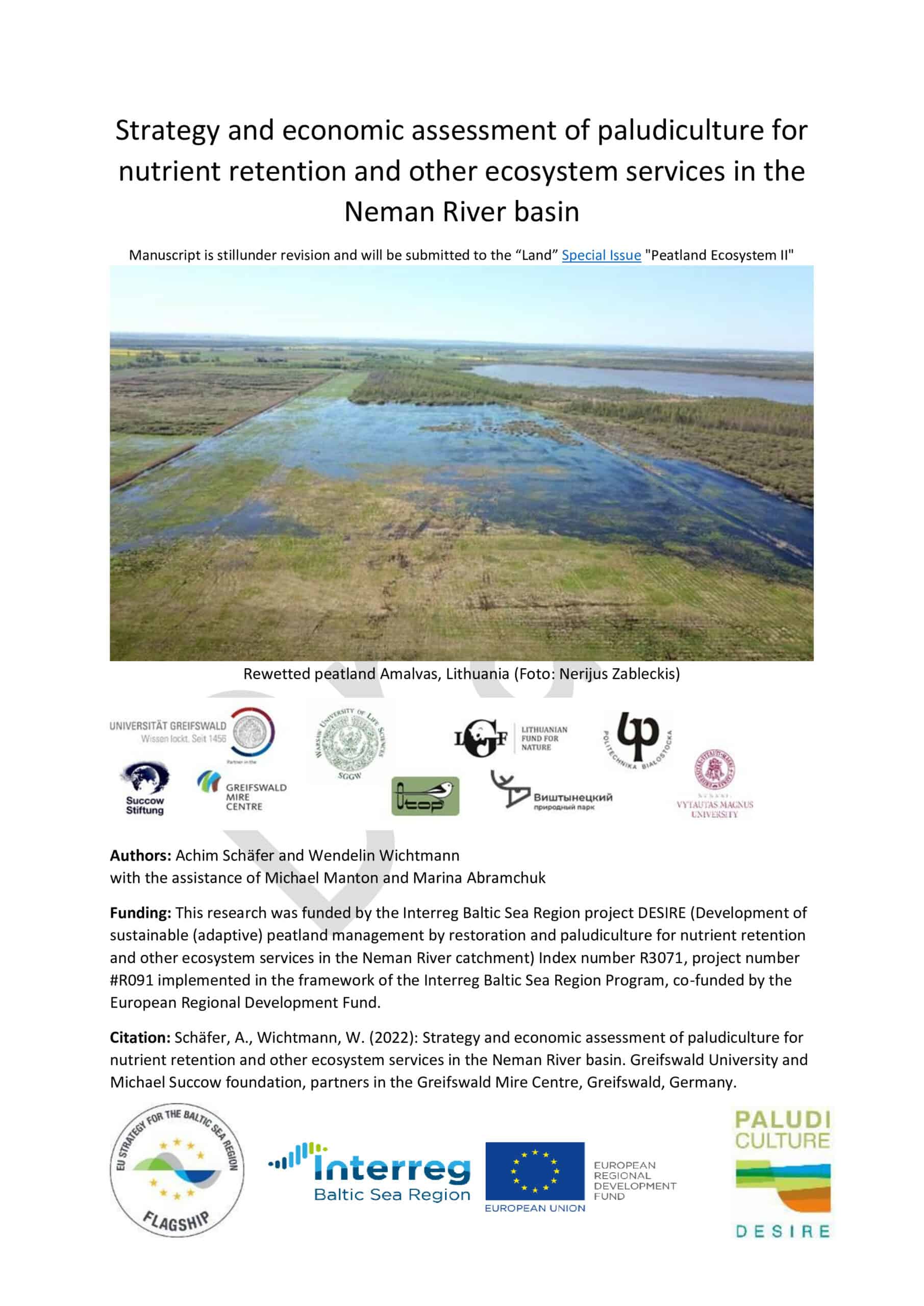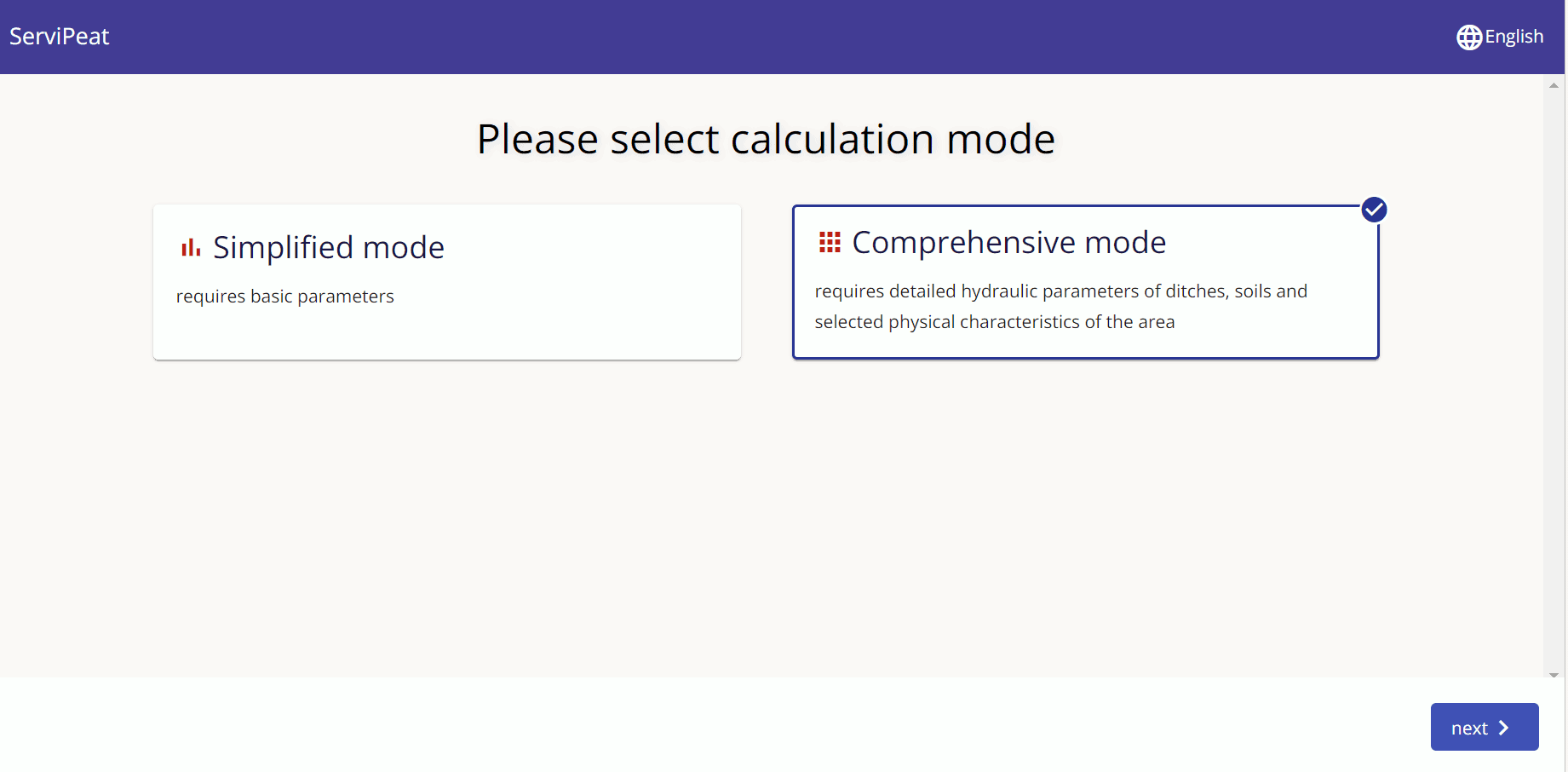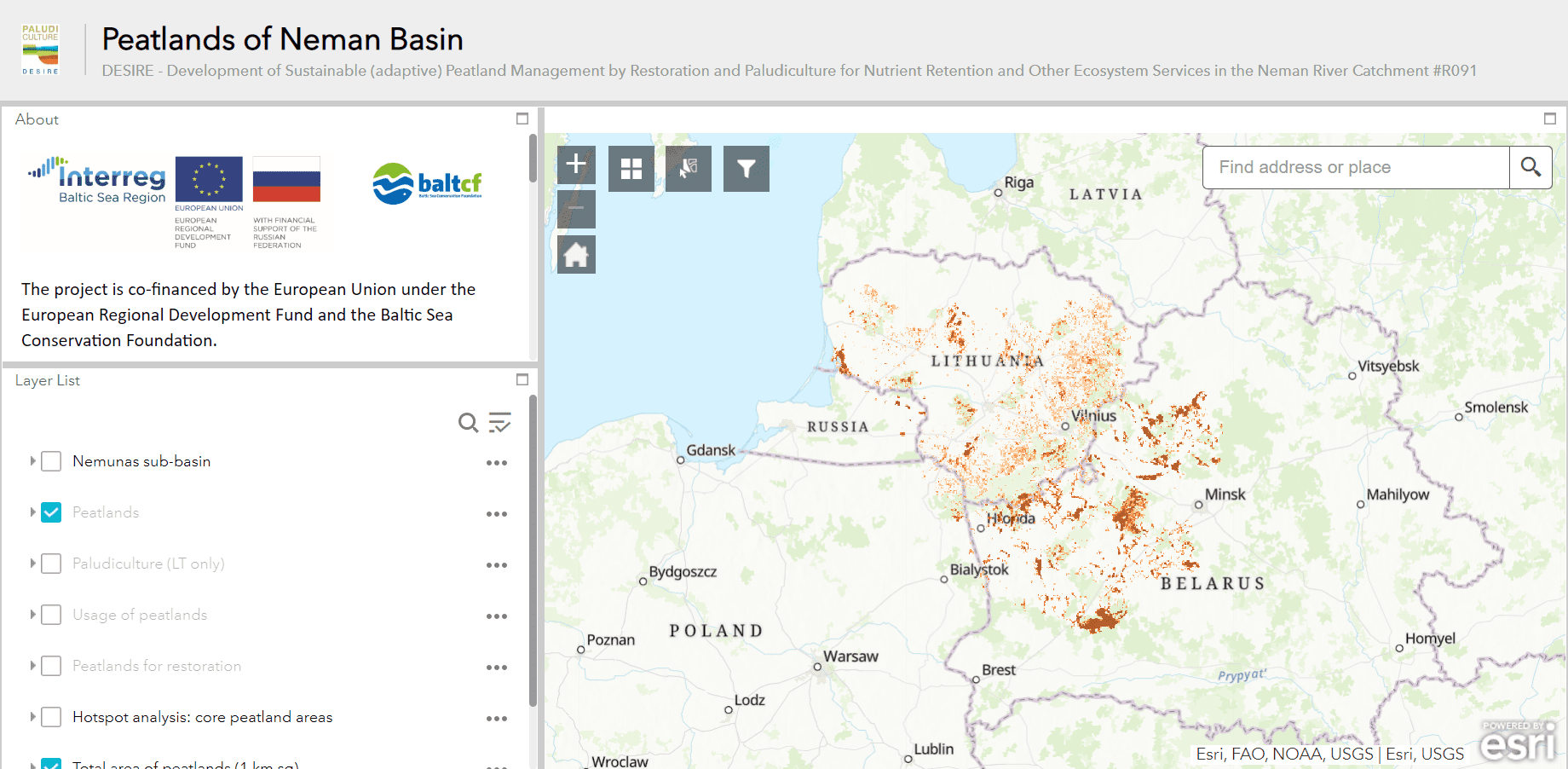DESIRE
Nutrients leaking to rivers
Essential ecosystem services provided by the Baltic Sea, e.g. biodiversity, fisheries and tourism, are threatened by eutrophication caused by excess loads of nutrients to the sea. Discharge from rivers is one of the main pathways how nutrients get to the sea. One solution how to tackle the issue was to decrease the amount of nutrients leaking to the rivers by reactivating already drained wetlands and converting their management to paludiculture, which is crop cultivation on wet peatlands.
A model area in the Neman river
The DESIRE project focused on the numerous disturbed peatlands in the Neman river catchment and ways to restore some of them to act as wetland buffer zones. The solutions to test were to rehydrate selected drained peatlands and establish a sustainable form of land use, so that such wetlands could serve as filters for water running into the river. There was a need for new knowledge, instruments, and incentives for others to copy the approach, e.g. adapted river basin management plans and agri-environmental schemes.
Budgets
in numbers
-
1.72MillionTotal
-
1.16MillionErdf
-
0.23MillionEni + Russia
-
0.00MillionNorway
Achievements
New tools to manage peatlands with a focus on water quality
DESIRE helped ministries of environment and agriculture, water management authorities, environmental protection agencies, agricultural advisory centres, and NGOs to make wise peatland management decisions on the catchment level, as well as on particular peatland sites. The functional tool to calculate rewetting requirements, the interactive online peatland database and the paludiculture strategy supported managing peatlands with a focus on water quality in the Neman river catchment. The partners analysed the river basin management plans for the Neman river, in particular, in Lithuania and Poland, and proposed how peatland rewetting could improve water quality. The partners also contributed to the consultation process of the strategic plan for the Common Agriculture Policy by preparing proposals for new agri-environmental schemes for wet peatland management, water retention and paludiculture.
Rewetting peatlands
In Lithuania, the partners successfully restored the water level at three pilot peatland sites of Liepakojai, Ąžuoliniai and Beržinė in Žuvintas Biosphere Reserve, which is a Natura 2000 area. They constructed regulatory dams on the draining channels in order to rewet the restoration sites and regulate water outflow. In order to maintain rewetted areas suitable for paludiculture, they also performed tree and shrub clearing and removal of stones. Almost 40 hectares of wetland were cleared and 10 m3 of stones were removed. Altogether, the works had a positive impact on 140 ha of peatlands in Žuvintas Biosphere Reserve, which were further managed by the farmers as part of agri-environmental schemes. The biomass from rewetted peatlands was used by local farmers for cattle fodder and as bedding material. In Russia, the preparation of the pilot plots Wittgirrenskoye and Visnevoye in the Kaliningrad region was done. The Wittgirrenskoye site was included in a national programme on carbon polygons for rewetting with national funds.
Outputs
Strategy and economic assessment of paludiculture for nutrient retention and other ecosystem service

Online tool SERVI-PEAT

Peatland database for the Neman River catchment and interactive GIS website

Project Stories
Partners
University of Greifswald
- TownGreifswald
- RegionVorpommern-Greifswald
- CountryGermany
- RepresentativeSusanne Peeger
- Phone
- E-Mail
- Web
Michael Succow Foundation
- TownGreifswald
- RegionVorpommern-Greifswald
- CountryGermany
- RepresentativeJan Peters
- Phone
- E-Mail
- Web
Warsaw University of Life Sciences - SGGW
- TownWarsaw
- RegionMiasto Warszawa
- CountryPoland
- RepresentativeMateusz Grygoruk
- Phone
- E-Mail
- Web
Polish Society for the Protection of Birds
- TownMarki
- RegionWarszawski wschodni
- CountryPoland
- RepresentativeTomasz Wilk
- Phone
- E-Mail
- Web
SUCCEEDED by PP10 (01.01.2019) Aleksandras Stulginskis University
- TownAkademija, Kauno r.
- RegionKauno apskritis
- CountryLithuania
- RepresentativeMichael Manton
- Phone
- E-Mail
- Web
Lithuanian Fund for Nature
- TownVilnius
- RegionVilniaus apskritis
- CountryLithuania
- RepresentativeNerijus Zableckis
- Phone
- E-Mail
- Web
State budget Institution of the Kaliningrad region "Nature park "Vishtynetsky"
- TownKaliningrad
- RegionKaliningrad Oblast
- Country
- RepresentativeAmalj Samerkhanova
- Phone
- E-Mail
- Web
Bialystok University of Technology
- TownBialystok
- RegionBiałostocki
- CountryPoland
- RepresentativePiotr Banaszuk
- Phone
- E-Mail
- Web
Vytautas Magnus University
- TownKaunas
- RegionKauno apskritis
- CountryLithuania
- RepresentativeMichael Manton
- Phone
- E-Mail
- Web
-
Project managerWendelin Wichtmann, Dr.University of Greifswald
-
Legal representativeJuliane Huwe, Dr.University of Greifswald
-
Financial managerMarina AbramchukUniversity of Greifswald
-
Communication managerWendelin WichtmannGreifswald University



